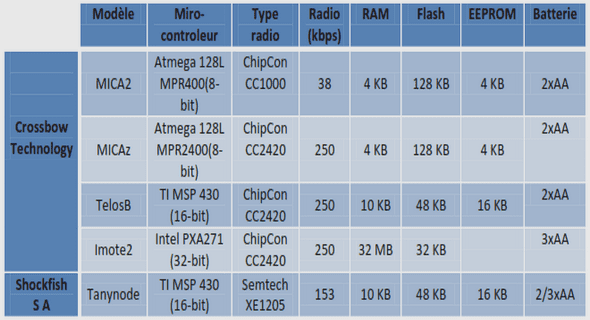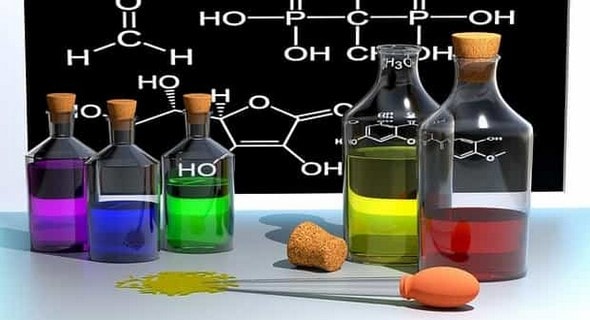Dilobenol A–G, Diprenylated Dihydroflavonols from the Leaves of Dilobeia thouarsii
The study of the EtOAc extract of the leaves of Dilobeia thou- arsii led to the isolation and identification of seven new di- prenylated dihydroxyflavonols named dilobenol A–G (1–7). Their structures were elucidated by spectroscopic analysis including UV, IR, 1D and 2D NMR and MS as well as by chemical hydrolysis. The isolated compounds were assessedfor their antibacterial, antiplasmodial and cytotoxic activities. They exhibited moderate growth inhibitory activities against Staphylococcus aureus, Vibrio spp., Bacillus spp, and Plasmo- dium falciparum without significant toxicity against mamma- lian cell line L-6.Dilobeia thouarsii Roem & Schult (Proteaceae) syn D. madagascariensis Chancerel or D. boiviniana Baill. is a tree endemic to Madagascar growing in forest and is char- acterized by male and female dioecious individuals bearing slightly different leaves.[1] Its wood is resistant to pathogens such as fungi or insects and is used in house construction and carpentry. The leaves are used in traditional medicine for the treatment of infected wounds and as an anthelmin- tic, diuretic and tonic. It is also used to prevent the risks of abortion.[2] A literature survey revealed that no phytochem- ical or pharmacological studies have been reported from the genus Dilobeia that is made up of two species endemic to Madagascar: D. thouarsii and D. tenuinervis. The family Proteaceae with 75 genera is represented by 1500 species and found in the southern hemisphere, particularly in Aus- tralia, New Caledonia, Madagascar and South Africa. These species are less common in South America.
The remaining proton at δ = 5.97 (6-H) ppm correlated with the aromatic carbon at δ = 95.5 ppm on the HSQC spectrum. The upfield shift of this carbon suggested the proximity of two oxygenated aromatic carbons and was fur- ther confirmed by its long-range correlations with signals at 160.9 (C-5) and 164.6 (C-7) ppm. The proton also showed connectivity to two other quaternary carbons at δ = 100.4 (C-4a) and 106.9 (C-8) ppm. Correlation of the hydroxy proton at δ = 11.84 ppm with C-6, C-5 and C-4a proved the presence of a penta-substituted benzene ring. Proton 9- H correlated with C-7 and the downfield aromatic carbon at δ = 159.2 ppm (C-8a) on the HMBC spectrum that indi- cated the attachment of the prenyl moiety at C-8 of ring A. Vicinal coupling between 2-H and 3-H along with their connectivity with a ketone at δ = 197.8 (C-4) ppm defined the ring C. The junction of ring C to B was determined by the interaction of 2-H and 6-H to C-2 and by those of 2- H and 3-H to C-1.Aβ-axial position was attributed to 2- H with a trans-diaxial relationship to 3-H as suggested by the value of their coupling constant (J = 10.9 Hz). The NOE interaction between 2-H and 3-OH confirmed their orientation on the same side of the molecule. NOE corre- lations between 3-H, 2-H and 6-H indicated the proximity of these protons.Careful analysis of the 2D NMR experiments (1H–1H COSY, HSQC and HMBC) established that the genuine sample of 4, corresponding to 3,5,7,4-tetrahydroxy-8,5- bis(3-methylbut-2-enyl)flavanone, is identical to lespede- zaflavanone C isolated from Lespedeza davidii.[22] The cou- pling constant of 1.7 Hz between 1-H and 2-H was in good accordance with its linkage in the α position with a 6- deoxy sugar unit corresponding to the rhamnopyranoside. From the NOESY spectrum, it was observed that com- pound 4 shares the same relative configuration as 3. There- fore, dilobenol D (4) was identified as 5,7,4-trihydroxy- 8,5-bis(3-methylbut-2-enyl) flavanone-3-O-α-l-rhamnopyr- anoside.
The linkage of the diprenylated dihydroflavonol with the glucosyl unit was evidenced by the long-range connectivity deduced from the HMBC data. The anomeric proton 1- H correlated with C-2 and C-7, whereas 4-H showed cross-peaks with C-3 and C-5. Further support was ob- tained from the NOESY experiment that revealed the inter- action of 6-H and 1-H. The coupling constant of 7.2 Hz at δ = 4.99 ppm is in agreement with a trans-diaxial between protons 1-H and 2-H in a β attached d-glucopyranose. Although there was insufficient quantity of the compound to allow for acidic hydrolysis, dilobenol E (5) was charac- terized as 3,5,3,4-tetrahydroxy-8,5-bis(3-methylbut-2- enyl)flavanone-7-O-β-d-glucopyranoside.Analysis of HMBC and NOESY spectra established that the two glycosyl moieties were linked with the diprenylated dihydroflavonol. Correlation of the proton at δ = 4.05 (1- H, d, J = 1.2 Hz) ppm with C-3 together with NOE interac- tions of 1-H, 2-H and 3-H with 3-H revealed a α linkage of rhamnose at C-3. On the other hand, connectivity of 1-H with C-7 along with the cross-peak of 6-H and 1- H observed on the NOESY spectrum confirmed the β link- age of glucose at C-6. Acid hydrolysis was performed on compound 6. It afforded the diprenylated dihydroflavanone corresponding to compound 1 and the monosaccharide components were identified as d-glucose and l-rhamnose. Thus, the structure of dilobenol F was established as 5,3,4-trihydroxy-8,5-bis(3-methylbut-2-enyl)flavanone- 3-O-α-l-rhamnopyranoside-7-O-β-d-glucopyranoside.
umn with a mixture of cyclohexane/EtOAc/MeOH, increasing in polarity, as eluant to give 12 fractions. Fraction F4 (102 mg) was purified by silica gel eluted with CH2Cl2/MeOH (gradient 98:2 to 90:10) to yield 14 sub-fractions. Sub-fractions F4–5 (21 mg) and F4–8 (8 mg) were subjected to Sephadex® LH-20 eluted with MeOH to furnish compounds 1 (2 mg) and 2 (4 mg). Fraction F6 (239 mg) was submitted successively to MPLC eluted with CH2Cl2/ MeOH (gradient 95:5 to 90:10) and to silica gel eluted with CH2Cl2/MeOH (95:5) to afford dilobenol D (4, 4 mg). Fraction F8 (73 mg) was purified by chromatography on silica gel eluted with CH2Cl2/MeOH (first 90:10, then 80:20) to give 3 (10 mg). Fraction F9 (1156 mg) was subjected to silica gel chromatography eluted with CH2Cl2/MeOH, increasing in polarity, to provide 18 fractions.


